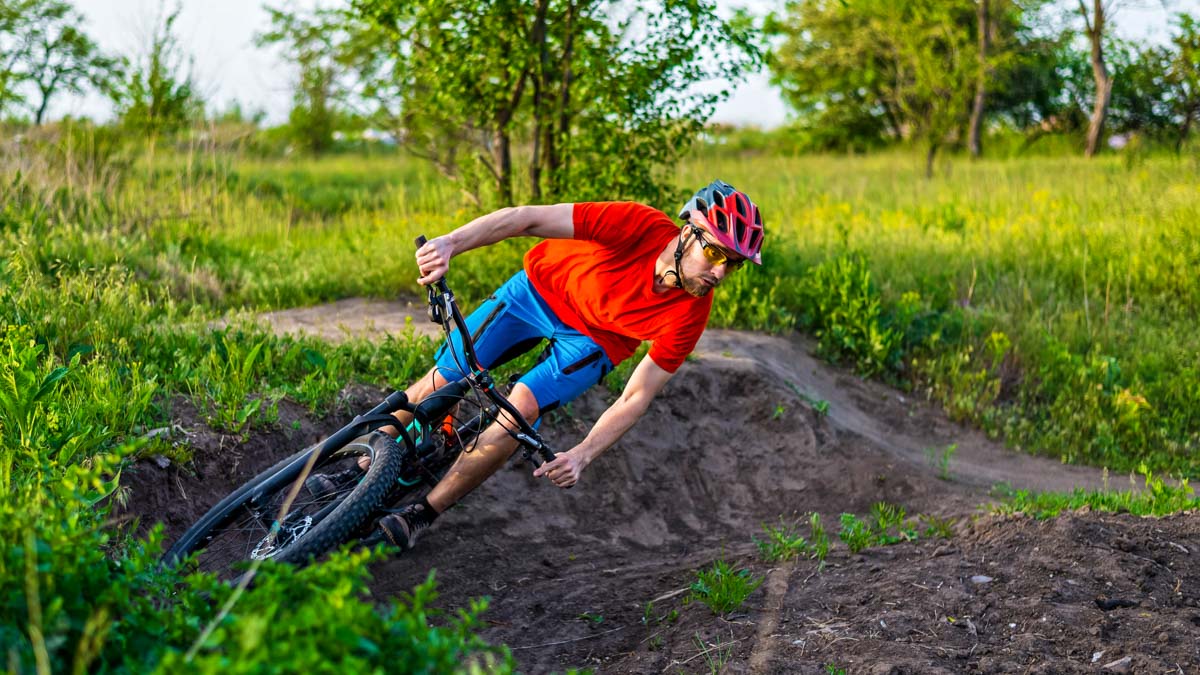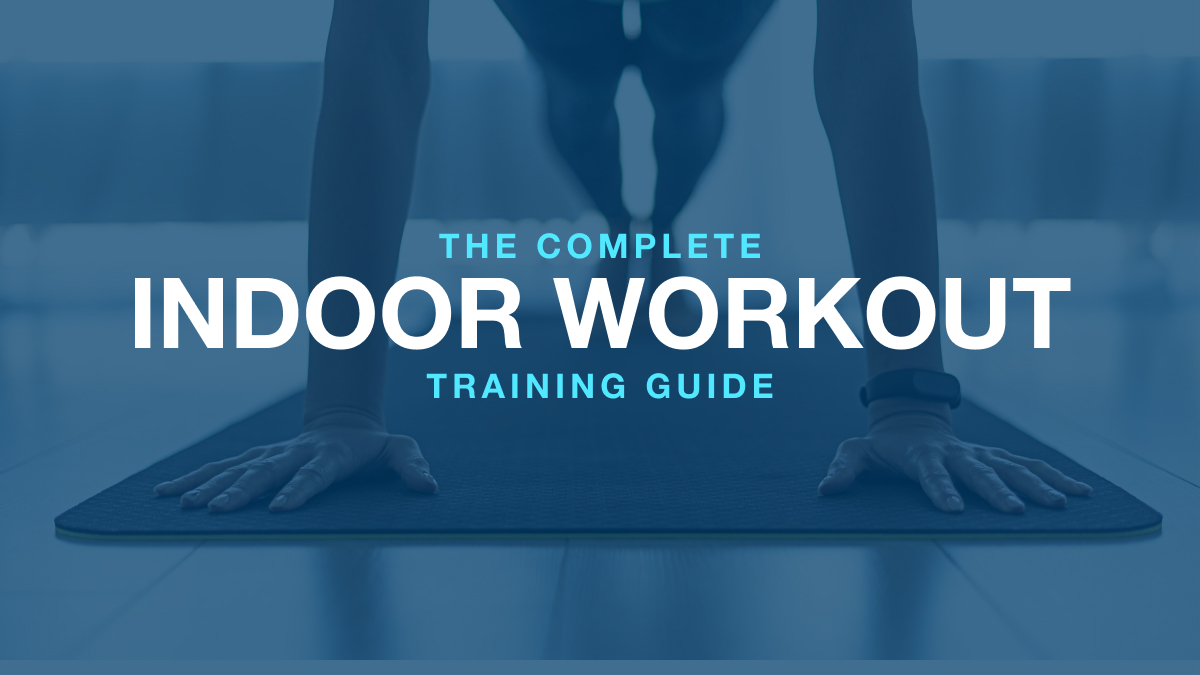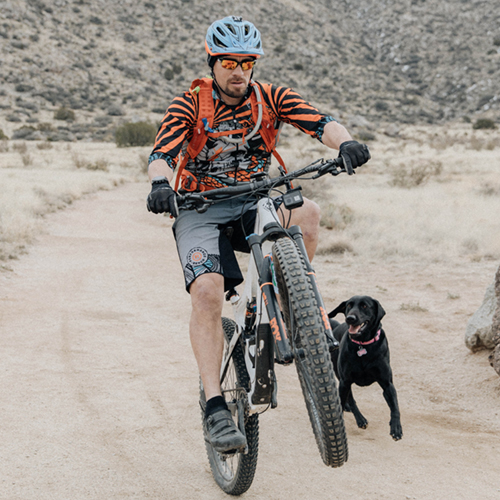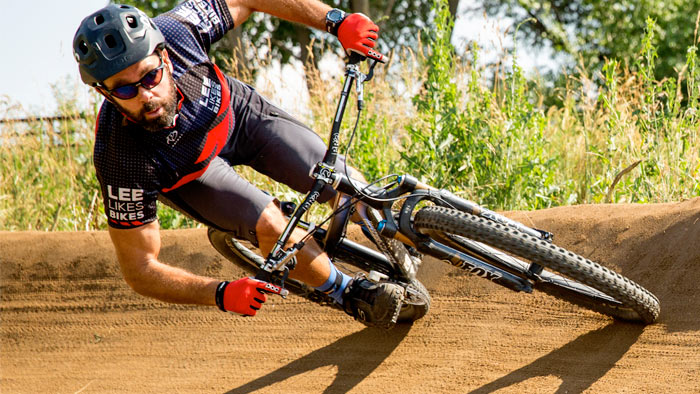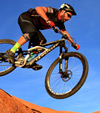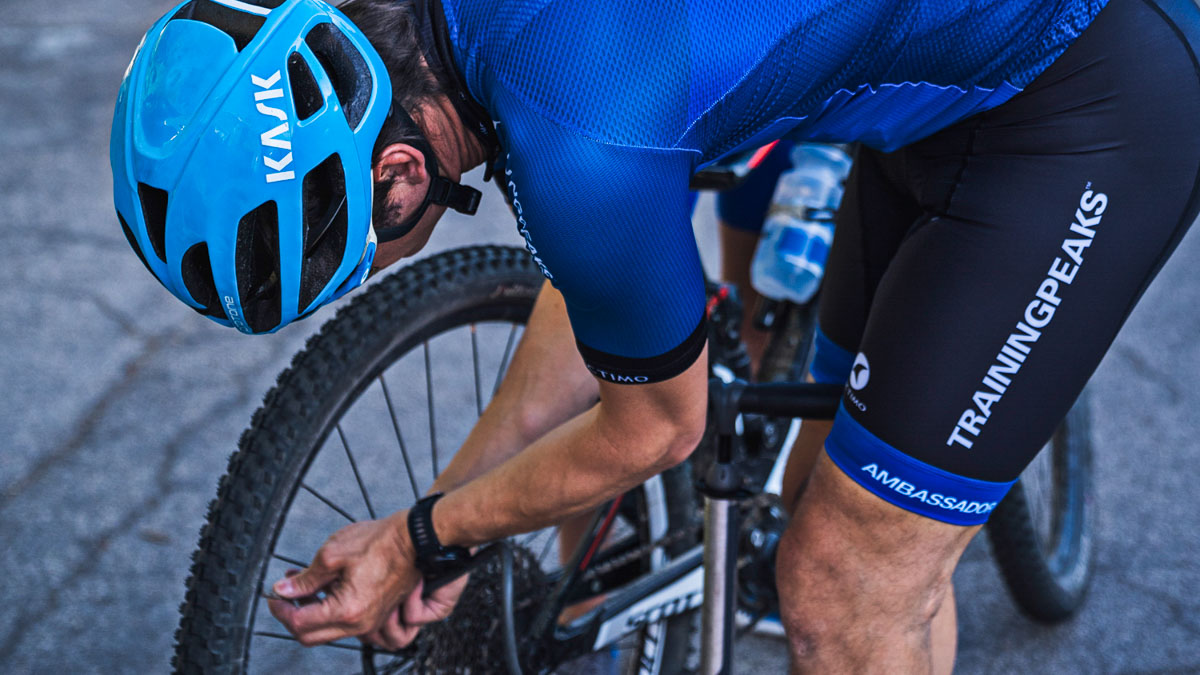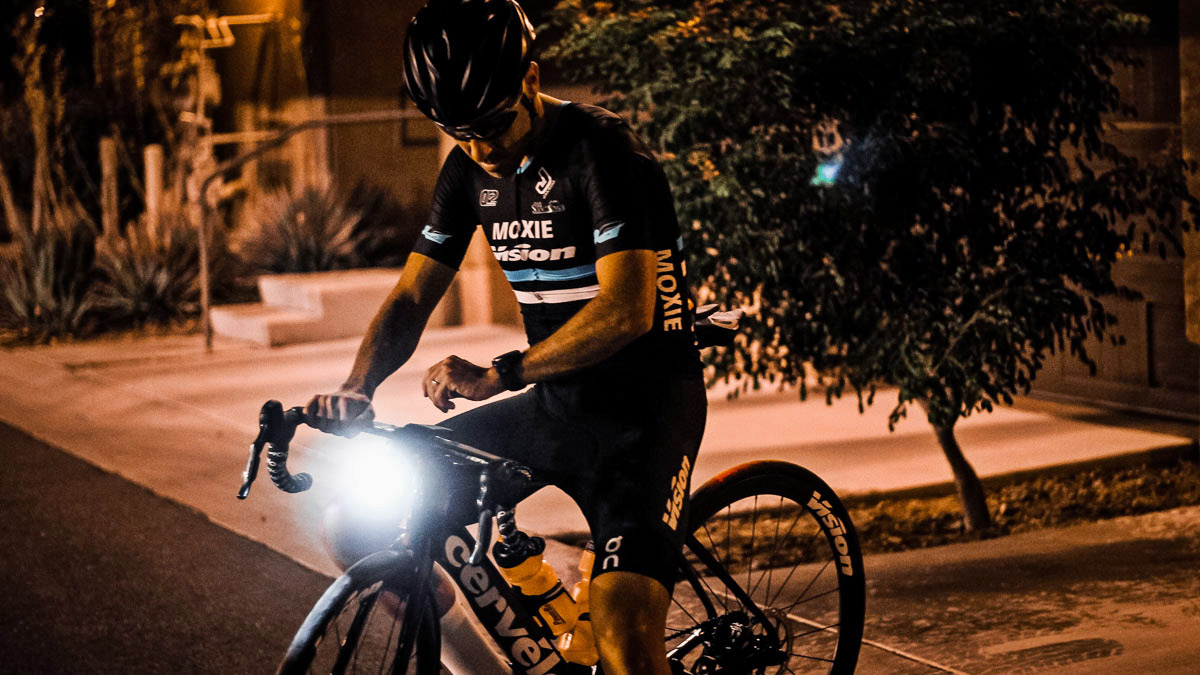In the first installment of this series, I focused on the necessity of strength development for mountain bikers of all kinds. Then in part two I explored how you can improve your power development using various kinds of interval training. For this third article, let’s take aim at how you can use a pump track to increase your MTB skill level and elevate your fitness, simultaneously.
Get Pumped Up
As much fun as it is to ride on tracks, trails, and other wild settings, it’s likely that you can only get out and about a couple of times a week unless you’re a professional athlete, someone with a lot of time on your hands, or have ready access to nature outside your front door. So what should you do the rest of the week?
In parts one and two of this series, I suggested that you spend some of it in the gym working on your strength and power, and gave you a few ideas on how to do so. Depending on the season, the amount of actual mountain biking you’re able to do might diminish significantly due to the weather, and there’s only a certain amount of time anyone (even me as a coach) wants to spend indoors on strength and power training.
This is where the pump track comes in. Though it has typically been considered a haven for BMXers, this short, up-and-down part of your local bike park can quickly become your secret weapon if you want to up your MTB game. As an example, my friend Aaron Gwin snapped his chain right out of the gate in a 2015 World Cup downhill race. He was able to use what he’d learned at the pump track as a former BMX racer to pick up speed and actually ended up winning the event.
While I’m never going to become the kind of rider that Aaron is, I’m lucky enough to have access to a pump track that’s about 10 minutes from my gym. Even if you have to drive a bit further, you’d still do well to head out there regularly to test yourself on a new kind of man-made terrain.
Jump to It
One of the best things about bike parks, and the pump track in particular, is that they allow you to develop certain skills in a safer setting than on a fast, unpredictable downhill course. One of these skills is jumping. Other than the rush of going fast, it’s the part of mountain biking that often gets newbies hooked. While there’s nothing like nailing a jump during a steep, technical descent, it’s a better plan to get most of your practice reps in an environment where the consequences are a little lower.
So instead of taking flight over rocks and other obstacles on a trail or switchback, try taking your place in the jump line at your local pump track. It’s a more controlled environment for not only learning how to get more air, but also to give you more confidence in sticking your landings. Remember that just like jumping in other sports, it’s not the getting off the ground part that’s dangerous in MTB – it’s how you come back down to Earth.
Jumping and landing at the pump track allows you to get used to creating momentum using your own body. The up-and-down of the jump itself can generate enough momentum for you to fly. Yet if you want to maximize your pop, you need to learn how to put more force into your pedals and extend your hips as you push the bike away from yourself. The pump track is the perfect place to do so. You don’t need to choose a section with the highest hills or the biggest gaps. Try taming your ego in favor of your skill development and start with more modest jumps so you can focus on technique. I also suggest that you use flat pedals instead of clipping in.
Stretch Your Skills
Jumping and landing are not the only technical elements of MTBing that you can build upon at the pump track. It also allows you to work on your turns. These are tighter and come more regularly on the short course’s berms than they would out in nature. Practicing your cornering multiple times in quick succession forces you to groove your technique. This way, when you’re out riding, you’ll instinctually feel better able to keep a tight line through the most twisty-turny downhill segments.
Trying to tame turns at the pump track requires you to power through your bottom bracket and drive through your tires. This will help you maintain your speed and preserve traction as you turn, making you less likely to wipe out. If you can learn to handle the extra g-forces generated in pump track turns, this will translate to every situation you’ll encounter in downhill and enduro riding. One of the most underrated elements of mountain biking is using isometric strength to aid in absorbing force while you’re generating power. There’s no better place to practice this than on a pump track.
Another skill component that you can emphasize here is the basic power position you need in all forms of MTBing. As you fly around the track, focus on hinging your hips, driving your knees apart, shoving your butt back, and flaring your elbows. As with the turning component, you’ll be doing this at speed, which will make it easier when you come to replicate it on your next ride. To further develop these and other skills, I’d recommend finding a coach in your area. After only four one-hour sessions with an expert, I felt much more confident and competent, and had eliminated most of the technique errors that I’d previously failed to even notice. And if you need additional pointers, check out Global Mountain Bike Network’s huge video library.
Fire Up Your Fitness
I often tell the fighters I train that “you can be the strongest person out there, but unless you’re fit, you won’t go far.” One of the reasons that Jon Jones and my other MMA athletes have come to embrace the pump track is that they can generate power and speed without tiring out their legs, as the course generates enough momentum that you hardly have to pedal once you get going. So another good use for this type of training comes after you’ve done a couple of fast downhill rides on consecutive days and need to give your legs a bit of a break.
From a conditioning standpoint, we’ll typically do two types of sessions at the pump track. The first is interval training. I’ll time Jon or one of my other athletes to see how fast they can complete the course, and then have them repeat that effort multiple times. The temptation among endurance athletes is to want every session to go long, but even for an elite athlete like Jon, 30 minutes is plenty if you’re keeping the intensity high.
To make sure they’re recovering between intervals, we use a heart rate monitor. From the FTP and VO2 max testing we do, I already know what their thresholds are, and want to make sure they’re coming back down into the yellow (high aerobic) zone before having them push back up into the red. Another slightly less intense session involves doing multiple laps without stopping. Given that I can push my heart rate close to the max after just one lap that takes me around 20 seconds, performing multiple laps in a row really jacks up your capacity fast. As such, you should start to see the time it takes to get your heart rate back down decrease as you get fitter.
While Jon is a relative newcomer to MTBing, he’s an out-of-this-world athlete and has learned to use his whole body to generate speed and power at the pump track. This illustrates the athletic demands of this kind of training and MTB in general. If you’re regularly training the major movement patterns and are strong, you’ll be able to apply your athleticism even if you wouldn’t consider yourself a mountain biking expert. Here are a couple of the sample sessions that our training group utilizes at the pump track.
Base Level Intervals
As a mountain biker, you need to learn the mechanics and movement before you try to whip consistent laps in. Don’t be afraid to use the kid-sized rollers. I still start each session on the small track to dial my technique back in. Also, using a heart rate monitor will track your workload. I suggest you avoid using a power meter for a pump track session, as it’s irrelevant in this scenario (this is because you harness the track itself and use core and upper body power to generate and sustain momentum, rather than your legs).
Assuming that you have some basic skills to get over the rollers and through the turns with very little pedaling, it’s time to start building your fitness to link multiple laps. The more finesse you have, the slower you can go to stay out of your threshold levels. Pedaling will allow you to rest, the opposite of what we are used to on our bikes when doing enduro or downhill rides.
I recommend starting off slow enough to still get over the rollers and using minimal pedaling to come out of the corners. This will allow you to start to get more time under your belt and develop the necessary skills to complete harder intervals.
Start with one-minute sets and build up to five-minute intervals. Recovery will vary based on your fitness level. Ideally, you’re coming back down to your low aerobic zone before you repeat. I recommend trying to keep your heart rate below threshold during the work sets.
Repeat these efforts a couple of times per week and add time as you get fitter. These intervals will be great to do for a few weeks as you build both your skill and fitness.
Medium Effort Intervals
After a few weeks of base level intervals or if you already have adequate skills, you can up the intensity level a little.
Warm-up (5-10 minutes)
This can be done on the small track to help build rhythm and mentally prepare you for the bigger sections. Progress to doing a few laps around the track you are going to be using.
Main Set
Perform eight rounds of 45-second to 90-second threshold level repeats. You don’t need to go all out but each rep should feel hard. Recover to your aerobic zone (Zone 3) before you start again. These work periods are not only fatiguing for your cardiovascular system, but also heavily tax your muscular and nervous systems. The pump track involves a blend of tensile and contractile strength. Your recovery should focus on how your body feels for the next set. Lactate will start to build up in your muscles as these efforts progress.
High Effort Intervals
After you have mastered the mechanics and your energy systems have adapted to the new workload, it’s time to have some fun and let your bike rip.
Warm-up (5-10 minutes)
This can be done on the small track to help build rhythm and mentally prepare you for the bigger sections. Progress to a few laps on the track you’re going to be using.
Main Set
Perform eight to 12 rounds of max effort for 15 seconds to 30 seconds. These are different than sprints, as you’re not winding up your legs and seeing an instant gain in power. Instead, you’re using your entire body to produce force and this takes time to build up speed. You also get some recovery in the turns, as you typically stop pumping as you wind through them. Recover between each set to your high aerobic zone (High Zone 3) before pushing hard again in the next round.
In terms of frequency, one pump track session a week should be enough for most of the year. But if your other options are limited, you have a track close by, or you just want to focus on your technique, then twice a week would be alright. Add in as many downhill or enduro rides as you can manage and two weekly strength sessions (don’t forget that upper body work I mentioned in part one) and you’ve got a pretty comprehensive program. The pump track is also perfect if you have kids and want them to be active while you train. They can stick to the beginner track – which most of the time will be okay even for younger children’s tricycles and bikes with training wheels – as you race around the more advanced ones.
